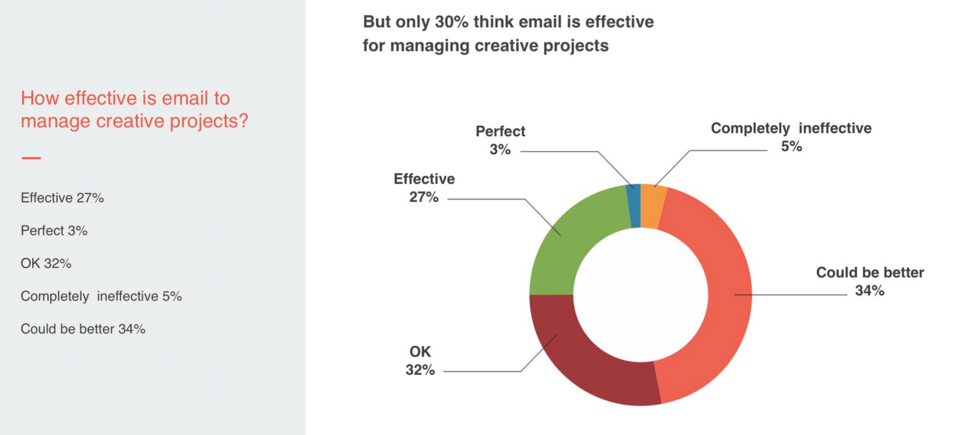 As a marketer most of my career, I’ve been involved in countless creative projects. From web sites and logo designs to TV commercials and 3D animation, I’ve done it. Every day I have ad creative to review or a demo video to approve, a conversation about a website design that I want to weigh in on or the new version of those booth graphics to check out.
As a marketer most of my career, I’ve been involved in countless creative projects. From web sites and logo designs to TV commercials and 3D animation, I’ve done it. Every day I have ad creative to review or a demo video to approve, a conversation about a website design that I want to weigh in on or the new version of those booth graphics to check out.
Like most marketers, these tasks usually came via my email inbox, where they vied for my attention with spam, lead gen solicitations, newsletters and all those threads I’m cc’d on because I want complete oversight of every project and task. Even when I could find an email that required a response, my feedback came via a reply that lacked the context of the visual work being discussed. I spent more time describing what I was talking about in the design or video than on what I actually thought of it.
With such an ineffective feedback loop, it became increasingly hard to meet deadlines and keep projects within budget. At times, my inbox could feel overwhelming and it became apparent that my creative process was broken.
Turns out, I’m not the only one who feels that way. Hightail recently commissioned a survey of over 400 creative professionals to better understand how they manage their projects. The results confirmed what I already knew, yet still shocked me:
• First, we asked if people had worked on a project that was late or over-budget in the past 12 months. An amazing one-third of respondents answer yes to both questions.
• One of the key reasons for all of these problems is, while 66% of creative reviews happened in email, when we asked if email is an effective way to collect feedback, only 30% of respondents agreed.
• Furthermore, 75% of participants admitted they do not have an effective creative process, 60% think critical project stakeholders lack sufficient oversight, and more than 85% believe that getting clear final approval on work is an issue.
Aside from making me feel better by not being the only one with these problems, these findings made it clear that the creative process is broken for a lot of people and things need to change. So how can we work more effectively on creative projects? Throughout my career I’ve noticed three themes that are critical to a great creative process.
1. Structure
The traditional top-down, hierarchical, command-and-control structure stifles creativity. The skills required in creative teams are highly fluid and each creative project is different. Your organization should build flexible creative teams that are non-hierarchical and encompass a variety of creative professionals based on the particular needs of that project.
2. Communication
Our communication tools, from email to IM and text messaging tend to be generic, so we’re constantly shifting our context from topic to topic. To be more productive, you need to get out of these horizontal communication tools and instead have contextual conversations that are relevant to what you’re working on. For example, Hightail’s creative collaboration service that takes comments and other feedback out of email and instead captures them right on the images, designs, videos, PDFs and visual content themselves.
3. Approach
Modern creative teams are much more organic and self-managed. Because every project is different, the course and milestones of the project can’t always be pre-determined. Your creative teams should be able to negotiate next steps and adapt as the project progresses, while understanding the implications of their work and the consequences of delays or cost over-runs.
Focusing on these three themes can help your business become more productive. I know this because I’ve spent the past 12 months implementing these ideas, best practices and purpose-built tools at Hightail and we’ve seen dramatic improvements in delivering high-quality creative work on-time and on-budget.
So let’s take a creative approach to solving our productivity problems. Free the world’s creativity and we’ll make a brighter future for everyone.








Great article, explains a lot!
Projects. Process. Final Approval. Milestone. I must here those words at least twenty times a day at my office. I’d like your article to more specifically explain what you’re doing in your office to address Structure, Communication and Approach.
Unfortunately our setup is mandated by the entire enterprise but maybe if we had a better option to bring to the table we could work outside of the executive-made system and be more productive.